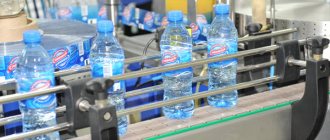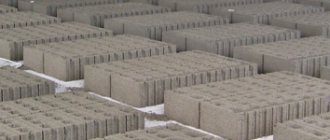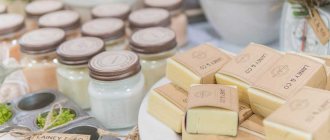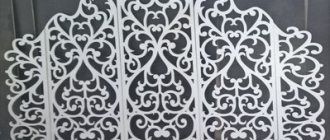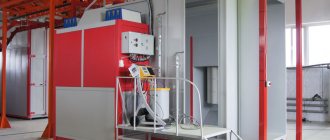Benefits
Is the nut butter production business profitable?
Currently, all areas of food production are occupied by enterprises of various sizes - from giant to home-type mini-factories. The entire range of food products - from bread and pastries to chocolate or marshmallows - is produced at enterprises in our country. Therefore, opening your own business in this industry is only possible through the production of highly specialized products, or goods that have a low price and high quality. Often, beginning entrepreneurs refuse to open enterprises in the food industry - there is too much competition in this area. Register for a free marathon
How to create passive income in 4 days
A marathon where you will create passive income live from scratch and learn specific strategies for investing in apartments, houses, garages, cars and even profitable sites
Begin
In addition to the production of semi-finished products, there is another way to enter the food industry: the production of products that have no analogues in our country. Finding such a product is quite difficult, but with the right approach it is possible to find it. One such product is peanut butter. This product is rarely produced in our country, although it has its admirers. Our stores feature foreign-made products.
Advantages and Benefits of Making Peanut Butter
Peanut butter is a fast food product and is aimed at people who purchase food in supermarkets. In our country, the number of such establishments has not yet reached the European level, although everything is moving towards this. Accordingly, the demand for snacks, in particular peanut butter, will grow.
The production of this product is beneficial to the entrepreneur because it has a low cost and a long shelf life. In addition, making peanut butter does not require the use of expensive equipment. The only disadvantage of such production is the need to purchase raw materials abroad. However, the business of producing nut butter turns out to be quite profitable due to the absence of transportation costs, which are included in the final cost of imported butter.
Prospects for the development of this business
Let's take a closer look at alternative production in the event of shortages of raw materials. For example, an industrial roaster can be used to produce simply roasted or salted peanuts with various additives.
This roaster can also be used to dry other types of nuts (cashews or hazelnuts). You can also roast sunflower seeds there.
As for the range of peanut butter itself, it can be expanded to include different textures. For example, it can be a paste of soft consistency, or it can be “crispy” due to pieces of coarsely ground nuts.
Where to start producing peanut butter?
To open a production workshop, you will need to rent or purchase premises of sufficient space. It must comply with all the requirements provided for premises used for the production of food products. The choice of legal form of organization depends on the scale of production.
The main employee of your enterprise will be a technologist who monitors the quality of the products produced. The profit of an enterprise depends on the quality of its products. The taste of the product depends on choosing the right ratio of components. Another important point of the business plan is the search for distribution channels. Nut butter can be sold to wholesale companies, large retail chains and small shops. At first, it is recommended to make deliveries within your region.
Don’t forget about such an important point as organizing the right advertising campaign.
It starts with registering a trademark, creating a corporate logo and packaging design. If you lack financial resources, you should start by advertising in places where your product is sold. Nut butter is in greatest demand in the autumn and winter; in the summer, people try to eat high-calorie foods less often. During this period, the enterprise, for example, can start procuring dried fruits. To open a workshop, you will need at least 2 million rubles, this amount includes renting premises, purchasing equipment and paying employees. The investment pays off within 1-2 years after the start of work.
How is peanut butter made?
The familiar peanut butter was invented in 1890 by an American doctor. He used it as a protein substitute for patients who were unable to chew meat.
The Runner variety of peanuts is best suited for producing peanut butter. Its grains are the same size and roast more evenly compared to grains of different sizes. They are delivered to the peanut butter plant already refined. To make a 500 gram jar, you need 560 grams, or about 1100 nuts.
The nuts are fed into the roaster where the temperature is maintained at 204 ºС. Constant shaking ensures more even browning. Over the course of an hour, more than 3,600 kg of nuts pass through this roaster. When they come out they are no longer white, but faded brown. They are then quickly cooled to room temperature using suction fans that provide rapid air circulation. It is important that cooling occurs quickly. This stops the roasting process and prevents the nuts from losing too much oil.
The peanuts are then put through a machine that removes the outer shell of the nuts by rubbing them between rubber bands, also cracking the kernels and removing the peanut core, which is slightly bitter. But what is removed is not disposed of in a landfill. For example, farmers use the shell as pig feed, and the core is used to make bird feed.
The nuts then go into a large stainless steel container. From there they are poured into a crusher
, in which they turn into paste. At the mixing stage, other ingredients are added - salt, sugar, and a small amount of hydrogenated vegetable oil, which plays the role of a stabilizer, preventing the liquid oil from separating and accumulating in the upper part of the jar. Peanut butter contains no artificial colors or sweeteners, no preservatives, and does not need to be refrigerated. The peanut butter is finally ready.
When stirred, the paste heats up to 60ºC, so it is passed through a cooling system to reduce the temperature to 38ºC. Then it is put into jars. Peanut butter is a healthy, protein-rich food that is loaded with vitamins, minerals and fiber. It has no cholesterol, but it does have fat. The good news is that more than 80% is unsaturated fat. In other words, it is a “good” fat that helps lower blood cholesterol levels. The bad news is that the remaining fats are trans fats, or “bad” fats. Their source is not peanuts, but oil used as a stabilizer. To avoid this, you can eat all-natural peanut butter that does not contain a stabilizer. You just need to stir the oil that has accumulated on top
Once filled with oil, the cans enter the capping machine. There is an aluminum membrane inside their lids. When the jars are heat treated, the membrane falls down and sticks to the top of the neck, sealing it hermetically. The machine prints the production date and expiration date on the expiration line. An unopened jar of peanut butter has a shelf life of one year. But where there are children, it is enough for a week.
How much can you earn
The cost of a 250 gram jar of nut butter is about $2. Selling price: 4 dollars. In order to cover the costs of raw materials, equipment and workers’ salaries within a year, it is necessary to produce and sell about 50 thousand jars of pasta. Anything you make and sell beyond this will become income.
The productivity of a used line is at least half a ton of product per shift, i.e. 2 thousand cans of pasta. In 22 working days – 44 thousand jars of product. Thus, with successful and continuous sales of the product, in the second month you can make a profit, subsequently earning two dollars per shift for each jar, namely 4 thousand dollars.
How much money do you need to start a business?
The production of nut butter involves the purchase of special equipment, which is supplied either separately or as an assembled line. If you want to reduce your initial investment, pay attention to used equipment. The specificity of product manufacturing is such that certain parts of the production line can be used in the production of some other products. Even if there is no opportunity to purchase peanuts, the enterprise will not be idle.
The cost of equipment for the production of nut butter is 1-3 million rubles. The average productivity of one line is 500 kg. for an 8-hour work shift. If the production line is assembled from individual components, costs are somewhat reduced.
So, a frying chamber will cost 200 thousand rubles, fans 40 thousand rubles, a cleaning unit - 400 thousand rubles. and mill - 200 thousand rubles. The difference is not too noticeable, especially considering the fact that you will have to additionally purchase conveyor lines and assemble the production line yourself.
Peanut paste making equipment
When you get acquainted with the features of preparing this product from peanuts, it becomes clear that particularly complex technological equipment is not required for this. You can buy equipment for the production of peanut butter in the form of a complex supply, or you can purchase separate machines, separately. By the way, it will also be that individual stages of the preparation of this product can be carried out in used elements of equipment for the food industry, in various mills and mixers. In addition, it is important that the types of equipment purchased can be used for preparing other food products.
Let's take a closer look at the price of equipment for the production of peanut butter. If you buy a new technological line for manufacturing goods individually, you will need an amount of about one million rubles. It will consist of the price of a roasting oven (200,000 rubles), an industrial fan (40,000 rubles), a grain cleaning apparatus (480,000 rubles), a crushing device (30,000 rubles) and a mill (240,000 rubles). ).
The price of a used peanut butter production line with a capacity of up to 500 kg per shift is about 2 million rubles. Of course, an automated production line is always more expensive than individual components. But it should be taken into account that having purchased equipment in separate units, in the future, during commissioning, you will have to spend money on auxiliary types of equipment, on intermediate conveyor sections for transferring raw materials from one device to another. In addition, everything will have to be connected together into a working automated complex with your own hands or with the help of invited specialists. This will also require considerable costs.
The necessary equipment in separate machines for peanut butter is advantageous in that they can be easily repurposed for the production of other food products. These include salted roasted peanuts and simply roasted peanuts. Roasted peanuts with fish and other smoked foods are also becoming a very popular dish.
The roasting pan can be used to roast sunflower seeds or dry any fruit. You can also expand the range of peanut butter itself by changing its texture. For example, introduce into production both a traditional product with a soft consistency and a “crispy” paste with inclusions of finely ground roasted peanuts. Additives with prunes, dried apricots, and raisins will help diversify the assortment.
In the food processing equipment market, peanut butter machines are now available for sale.
GMS130 Peanut Butter Machine
A whole series of machines model GMS130 is designed for grinding sesame, peanuts, almonds and cocoa. Passing through the machine, a homogeneous mixture is obtained from the raw materials, into which it is only necessary to add the necessary food additives. In the apparatus, ultra-fine grinding of the raw material occurs, its emulsification followed by homogenization. The last operation is mixing the resulting composition with additives. The machine is capable of producing up to 500 kilograms of pasta per hour with an installation power of 11 kilowatts. The price of such a car is approximately 150 thousand rubles.
Another machine for making peanut butter is model GMS130B. It differs from the machine discussed in that it can produce from raw materials not only peanut butter, but also just peanut butter. The productivity of the apparatus, otherwise called a colloid mill, is from 70 to 100 kilograms per hour. You can now buy a GMS130B peanut butter machine for 140,000 rubles.
Colloid mill GMS130B
This machine is widely used in the food industry. Depending on its settings, you can also get not only peanut butter, but also sesame paste.
Equipment for storage, preparation, dosing and transportation of raw materials
At the initial stage, it is necessary to dose the raw materials correctly. Depending on the complexity of production, liquid and solid ingredients are used. The main component of the product is various types of flour, which are pre-sifted and passed through a magnet. Then the dry components are fed to a common line. The dough components are transferred to a pasta press, in which dispensers precisely measure the required amount, and a super-speed mixer mixes it thoroughly.
Specialized equipment is used to dose liquid additives. When recycling the starter dough, it is possible to add crushed products for reprocessing.
Equipment for primary transport packaging, transfer to warehouse
At the final stage, the finished product is packed and then transferred to the warehouse. This piece of equipment includes:
- multi-head dosing units;
- machines for packaging ready-made pasta in film or boxes;
- transporter for corrugated boxes;
- palletizers, opalizers;
- various control systems;
- transport and transmission mechanisms.
The control system includes devices for rejecting by weight and the presence of metal-magnetic impurities.
Auxiliary equipment
A fully equipped pasta production is equipped not only with the main mechanisms, but also with various auxiliary equipment that supplies the line with the necessary energy resources. Also, auxiliary mechanisms provide the required air temperature, the required vacuum level, and the supply of compressed air. For this purpose, vacuum pumps, compressors, chillers and other devices are used to start pasta production.
